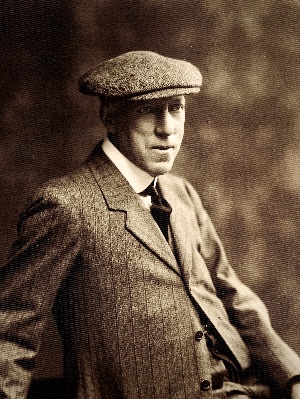Stuchbury, John
Also known as: Stutsbury, John
Dancer
Collection date: Jan 1910
Area: Northamptonshire
John Stuchbury of Hinton-in-the-Hedges (1835-1914) age 74: Sharp wrote ‘Stutsbury’ but it was consistently ‘Stuchbury’ in all records. Hinton-in-the-Hedges village is 3 miles W of Brackley in South Northants. Sharp had two problems with the dances from the Brackley area – first he had trouble obtaining the relevant morris tunes and secondly he was unsure whether Hinton and Brackley dances were one and the same or whether they were independent traditions. Interviews that he conducted in Sept 1922 at nearby villages of Dadford, Maids Moreton, Westbury and Tingewick (Folk Dance Notes 4/88,89) convinced him that it was the Brackley side that had the biggest reputation and the strongest history. Men from surrounding villages knew the Brackley dances and even joined in the set when the Brackley side passed through their village on their way to Stowe House at Whitsuntide. In the end Sharp published 6 set dances and 1 jig all under the name of ‘Brackley’ dances in Morris Book 3 (2nd ed 1924).
Subsequently, however, Fred Hamer of Bedford Morris men interviewed old Brackley dancers and came to the conclusion that some dances really did belong to Hinton-in-the-Hedges and Lionel Bacon in his Morris Handbook (1974) concurred with this (pp201-206). These dances were in fact the ones collected from John Stuchbury on 13 Jan 1910 as follows: Shooting (FT2435), Lads a Bunchum (FT2436), Bacca Pipes Jig (FT2437) and Getting Upstairs (FT2438). It has been suggested that Stuchbury was a Brackley man who had gone off to teach a new Hinton side. This was not the case. John was born and lived his whole life in Hinton. Probably Stuchbury danced with both sides anyway.
He was baptised on 28/6/1835 at Hinton, 2nd of 3 sons of John Stuchbury Snr, an agricultural labourer and his wife Elizabeth. He married Eliza Stowe from nearby Evenley village in October qr 1855 (3b 15) and they raised 8 children in Hinton - none were born in Brackley. John was a shepherd in 1861 and then an agricultural labourer at all censuses till 1911. He died in October qr 1914 (Banbury reg 3a 1256).
Although Sharp had already interviewed Timothy Howard of Brackley in Sept 1909 (see separate profile), the timing of Sharp’s interview with John Stuchbury in Jan 1910 was significant. Howard hadn’t really given Sharp a good tune to use and his dancing at age 71 was ‘unmusical’. Stuchbury, however, provided Sharp with a stick dance (Shooting) and a jig (Bacca Pipes) that he could use straightaway in Morris Book 3 (1st ed 1910). Sharp noted that Stuchbury’s version of Shooting was different to Howard’s version but published it anyway.
Note: The distinctive ‘Twirl’ of the sticks is part of Hinton dances just as much as the Brackley dances. There is no morris side at Hinton currently but there are Youtubes of Moulton Morris Men performing some Hinton dances. Fred Hamer (1909-69) referred to the work of Dr Kenworthy Schofield when he produced his article on the Hinton and Brackley traditions in Journal of the English Folk Dance and Song Society 7 no.4 (1955). Keith Chandler’s ‘Gazetteer’ (Hisarlik Press 1993) has information on Brackley pp106-112 and on Hinton-in-the-Hedges p115.

